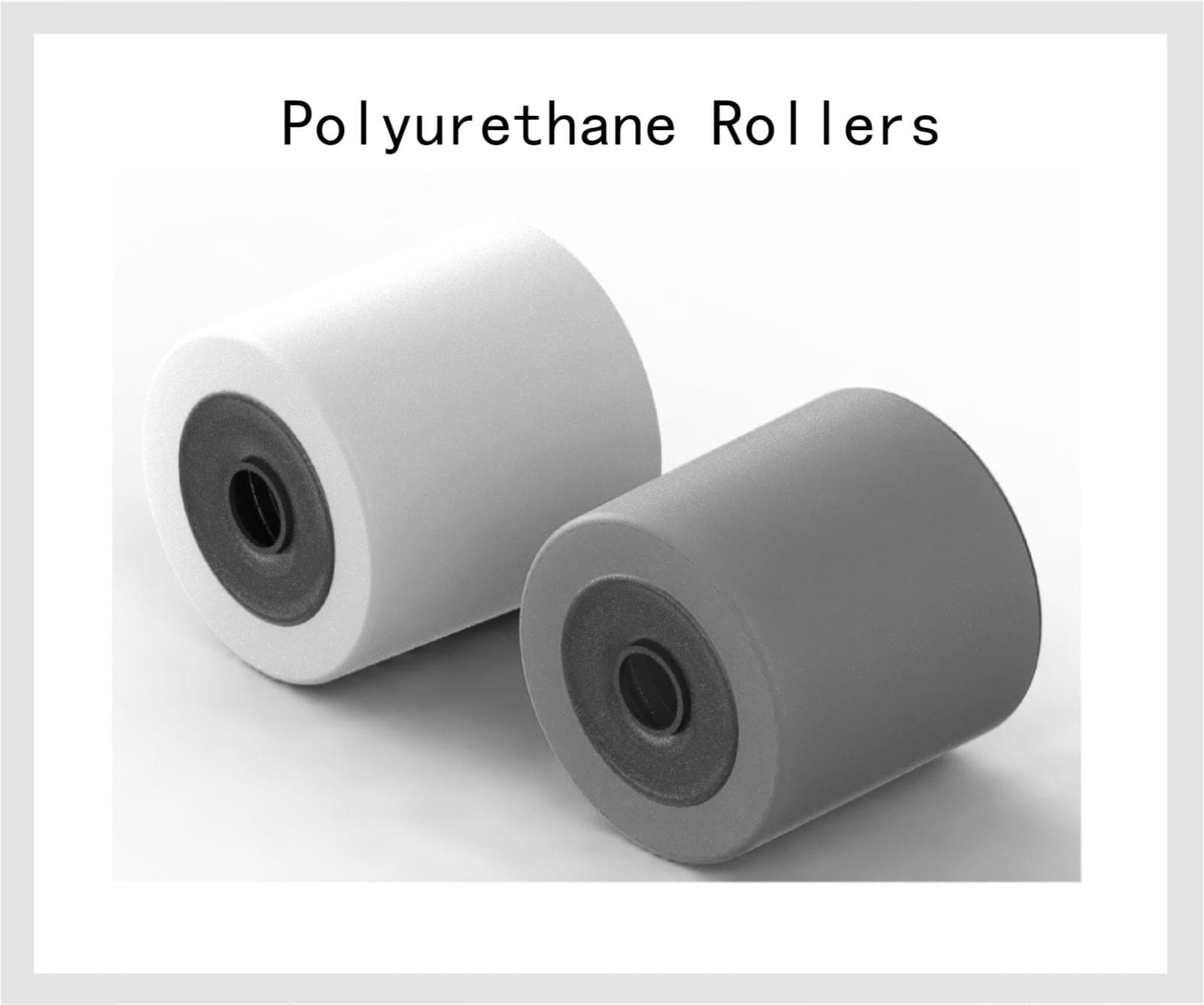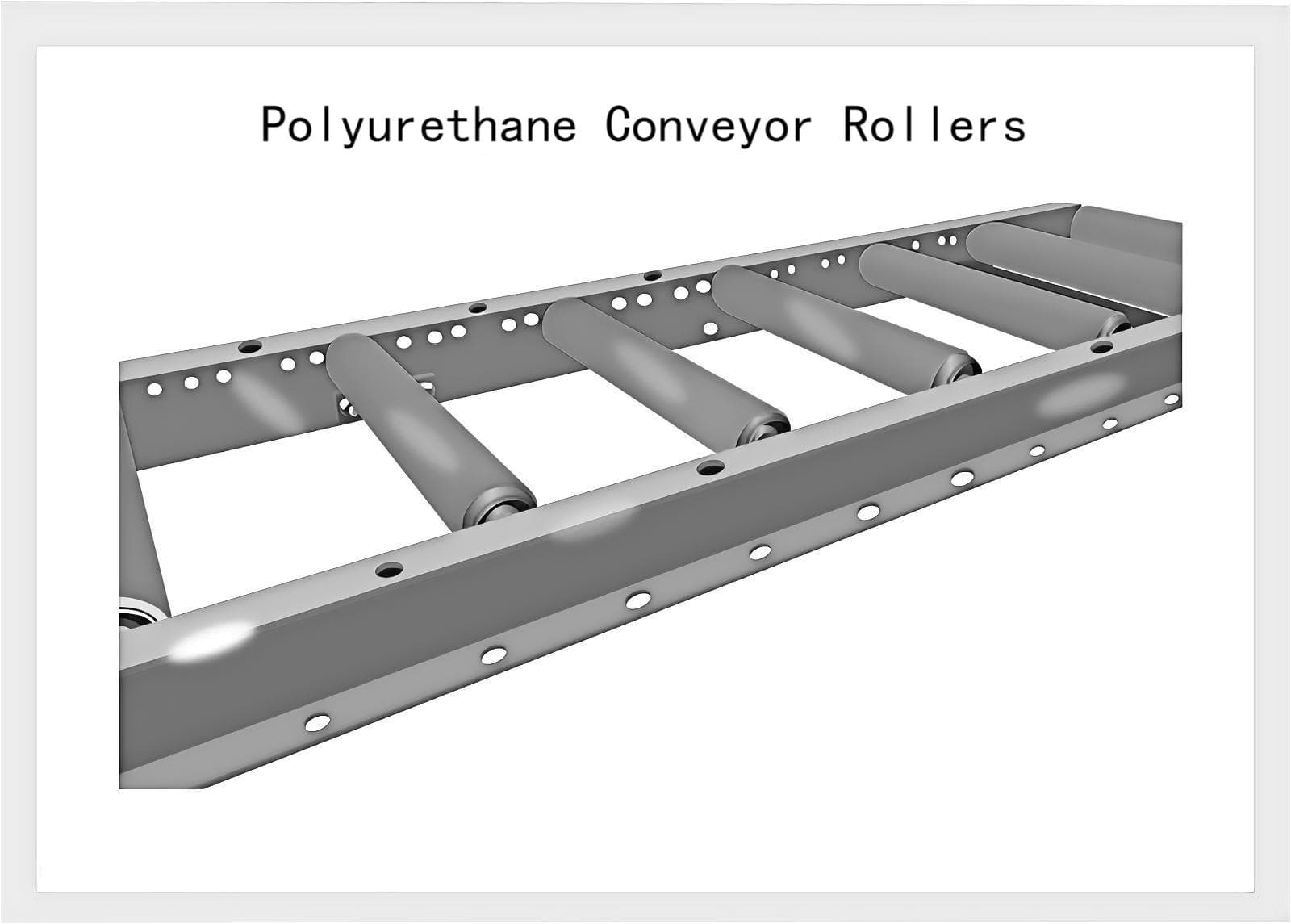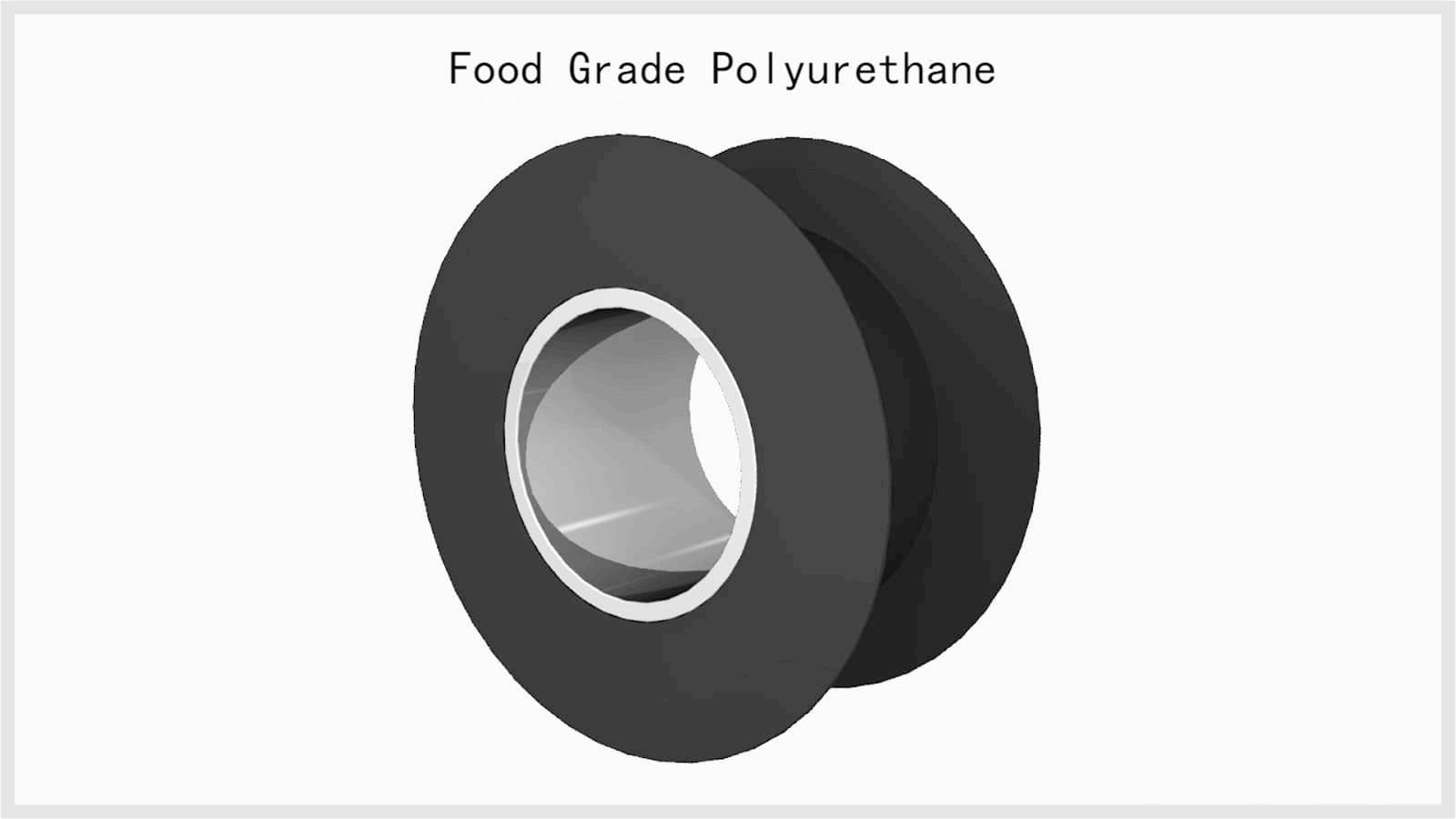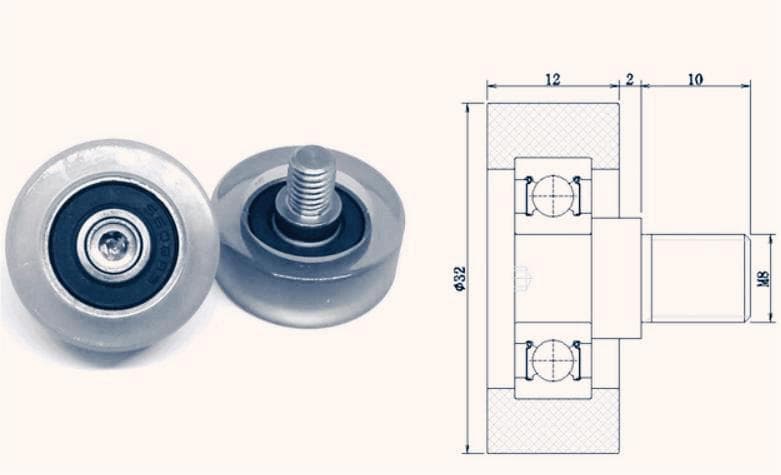How Polyurethane Rollers Are Made
Polyurethane rollers, or poly rollers, are vital in many industries because they are durable, flexible, and resistant to wear and chemicals.
In this blog, we will guide you to explore how poly rollers are made throughout the process from core fabrication to quality testing, and explain why they are so important.
Understanding Polyurethane Rollers
What Are Polyurethane Rollers?

Polyurethane rollers, also called polyurethane rollers with bearings, are cylindrical parts used in many industrial applications. They have a steel core covered with a layer of polyurethane, which acts as a protective and functional coating, enhancing the roller's performance.
Polyurethane drive rollers are valued for their durability, flexibility, and resistance to wear and chemicals. With these features, the rollers are able to handle heavy use, adapt to different pressures, and resist damage from various substances, which make them reliable and efficient in tough environments.
What are polyurethane rollers used for?
Polyurethane rollers are utilized across various industries, including:
Manufacturing: For material handling and conveying.
- Automotive: In assembly lines and painting processes.
- Printing: For transferring ink and paper handling.
- Textile: In fabric processing and dyeing.

Polyurethane rollers are used in many manufacturing processes for tasks such as:
- Material Conveying
- Squeezing
- Pressing
- Laminating
- Feeding
- Spreading
- Coating
- Grains Milling

Roller Manufacturing and Repair
Roller Core Fabrication and Preparation
Material Choice
Steel is chosen as the primary material of roller cores due to its strength and durability. It offers a solid base for the polyurethane coating.
Fabrication
The core of roller urethane is made using processes like rolling, milling, cutting, and welding, resulting in a precise and sturdy structure.
Design and Structure
The core design is made up of an outer cylinder to hold the polyurethane, keyways for secure attachment, and space for bearings to ensure smooth rotation.

Secondary Processing
Secondary processes for urethane roller cores typically include:
- Machining: Precision machining to achieve the desired dimensions and surface finish.
- Heat Treatment: Strengthening the core material through processes like annealing, quenching, and tempering.
- Blasting: Removing surface impurities and preparing the core for coating.
- Lapping: Achieving a smooth and precise surface finish.
- Cleaning: Removing any contaminants to ensure a clean surface for coating.
- Coating Application: Applying layers of protective or functional coatings, such as polyurethane.
- Balancing: Ensuring the roller core is evenly balanced to prevent vibration during use.
- Inspection and Testing: Checking for defects and verifying that the core meets quality standards.
Roller Balancing
Types of Imbalance
Static and dynamic imbalances can both harm roller performance, but in different ways. Static imbalance causes wobbling due to uneven weight distribution around the roller's axis. Dynamic imbalance leads to irregular rotation and complex vibrations because of uneven mass distribution along the roller's length. Both types of imbalance can reduce performance and lifespan of the roller.
Balancing Process
Dynamic balancing uses a computer-controlled system to detect and correct imbalances in the following steps:
1. Detection: The roller is rotated, and sensors measure vibrations and rotational forces. The computer analyzes this data to identify any imbalances.
2. Analysis: The system calculates the exact location and magnitude of the imbalance. This detailed analysis helps pinpoint the specific areas that need correction.
3. Correction: Based on the analysis, the system determines the appropriate counterweights or adjustments needed. These adjustments are made to balance the roller accurately.
4. Verification: The roller is rotated again, and the system rechecks for any remaining imbalances. This step ensures that the corrections have been successful and the roller is now balanced.
Polyurethane Preparation and Bonding
Polyurethane Blending
Chemical Composition
Polyurethane is crafted from components like polyols, diisocyanates, curatives, and additives. They’re tailored to achieve specific properties for various applications.
- Polyols: Determine flexibility and hardness. Choosing different types (e.g., polyester or polyether) adjusts elasticity and durability.
- Diisocyanates: React with polyols to form the polymer. Types like MDI or TDI affect hardness, temperature resistance, and strength.
- Curatives: Control curing and influence final properties. Different curatives (e.g., diamines or diols) adjust hardness and abrasion resistance.
- Additives: Enhance specific properties. Examples include UV stabilizers for sunlight resistance and antioxidants for longevity.
Mixing Methods
There are three main mixing methods for polyurethane blending:
- Single-shot Method:
This method ensures quick and efficient mixing for high-speed production, with components kept in separate chambers and mixed together in one step.
- Prepolymer Method:
Polyols and diisocyanates are initially mixed to create a prepolymer. This prepolymer is then reacted with other components, offering better control over the reaction and final product properties.
- Quasi-prepolymer Method:
Polyols are partially reacted with diisocyanates, resulting in a less viscous mixture. This method balances simplicity and control, making it easier to handle and process.
Bonding
Chemical Bonding
Bonding agents help polyurethane stick firmly to the roller core, usually metal. First, a primer cleans and activates the core surface. Then, an adhesive creates a strong bond with the polyurethane, ensuring it stays attached during use.
Building Methods
- Casting
In casting, polyurethane is poured into a mold around the roller core. This method is economical and efficient, suitable for producing various shapes and sizes.
- Injection Molding
Injection molding uses advanced equipment to inject polyurethane into a mold with machined dies. This method provides high precision and is ideal for detailed designs and high-performance applications, although it is more expensive.
These buiding methods are chosen based on cost, complexity, and production needs.
Curing and Cooling
Curing Processes
Curing stabilizes elastomers like polyurethane. Heat or room temperature initiates cross-linking between molecules.
In heat curing, high temperatures are used to speed up the process, creating strong bonds that make the material resistant to heat, cold, and solvents. Room temperature curing uses chemicals to achieve the same effect without heating.
Post-Curing
Post-curing adds an extra step after the initial curing. This further improves the elastomer's strength, durability, and resistance to aging. It ensures the material performs well under long-term stress and harsh conditions.
Cooling
After curing, polyurethane rolls need to cool to solidify and stabilize. This can be done gradually at room temperature or with controlled cooling systems. Once cooled, the rollers are carefully removed from the mold, maintaining their shape and properties.
Machining and Quality Testing
Machining Processes
- Surface smoothing:
Surface smoothing removes any bumps and excess material from the rollers by means of grinding and other methods. This results in a smooth and even surface, making the rollers more effective and visually appealing.
- Customization:
Customization involves cutting and laser engraving to shape the rollers to specific designs. These processes allow for precise adjustments, ensuring the rollers meet exact specifications and are tailored to their intended use.
Quality Testing
- In-House Testing
In-house testing checks basic properties of poly rollers, like hardness, abrasion resistance, and tear strength. These tests ensure the rollers meet quality standards and perform well in their intended uses.
- Advanced Testing
Advanced testing includes specialized tests for specific needs. For example, accelerated aging tests are used to predict long-term durability; and heat resistance tests can ensure the rollers can handle high temperatures.
These tests give a deeper insight into how the rollers perform under extreme conditions.
Conclusion
This blog guides you to explore how polyurethane rollers are made. Polyurethane rollers are made through careful core fabrication, coating, curing, machining, and thorough quality testing. Quality control ensures that each roller is durable and performs well, even in tough conditions.
We use eco-friendly materials and efficient processes to minimize environmental impact. Choose our high-quality polyurethane rollers for reliable and efficient operations. Contact us today to learn more about how our products can benefit your business.
Keep Learning








